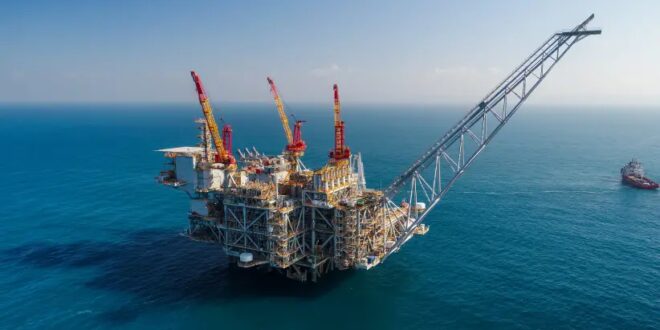Both rockets and suicide drones were used to hit Israel’s strategic assets.
Hamas fired rockets toward Israel’s gas installations in the Mediterranean after launching attacks from Gaza last Monday, causing them to be placed on their lowest level of functioning, though none of the rockets came close to reaching the installations.
Israel has several gas installations, with the Tamar gas field’s production platform standing just 25 kms. off the coast of southern Israel.
In May 2019, during another violent confrontation, Hamas and Palestinian Islamic Jihad (PIJ) launched 690 rockets and mortars at Israel in under 48 hours, prompting Energy Minister Yuval Steinitz to suspend natural gas supplies from the Tamar field.
During the past week of rocket attacks Hamas has targeted the country’s gas installations, prime strategic assets. with both rockets and drones.
The rockets were not intercepted as they never got close to the platforms, but an Israel Air Force F-16 downed a drone.
According to a senior military official, the chances of a rocket actually hitting an installation would be about one in 10,000. Nevertheless, if one did, Hamas would view it as a major achievement and Israel would have to respond accordingly.
On Monday the IAF targeted a car near the beach in the northern sector of the Strip inside which were operatives as well as an autonomous submersible naval vessel belonging to Hamas.
“We recognized preparations for a maritime attack,” IDF spokesman Brig-Gen. Hidai Zilberman said, adding that the maritime vessel had been brought down to the beach and was being prepared to carry out “a terror attack in Israeli waters” when it was struck and totally destroyed. Several operatives who had been in the car were killed.
Apart from the threat to the offshore gas installations, more than 90% of Israel’s imports arrive via the Mediterranean.
Protecting these vital sea lanes is not easy. While the country’s navy is relatively small compared to other IDF corps, it has a significant amount of territory to protect from the Islamists’ growing naval prowess.
Since Operation Protective Edge in 2014, both Hamas and PIJ have significantly expanded their naval units, which now include naval commandos, jet skis, autonomous submarines, explosive commando ships, precision drones.
In the latest round of fighting, the Israeli Navy has carried out dozens of attacks against targets belonging to Hamas and PIJ, including the targeted killings of three senior Hamas frogmen. It has destroyed eight warehouses containing naval weaponry, 10 Hamas naval posts, 22 vessels and more.
“The most significant thing, as in any IDF corps, is to reduce their capabilities, and maintain a strong defense posture,” Navy Commander Maj.-Gen. Eli Sharvit told reporters. “That is why we attacked outposts, ships, weapons depots, infrastructure and operatives. We worked to ensure that the naval units of Hamas and PIJ have been under pressure.”
 Eurasia Press & News
Eurasia Press & News




